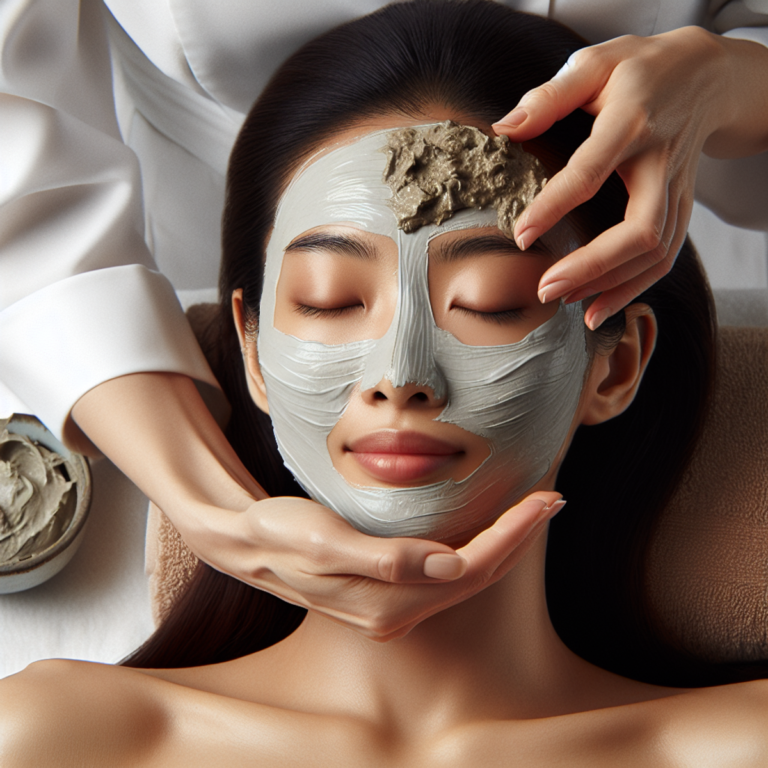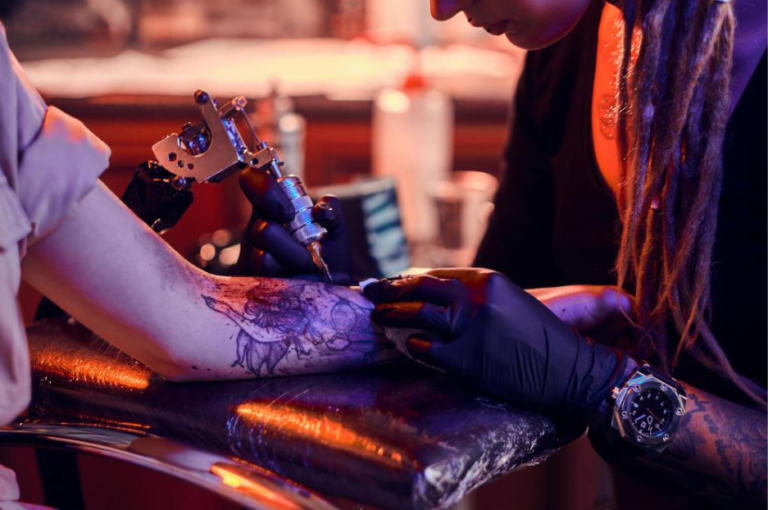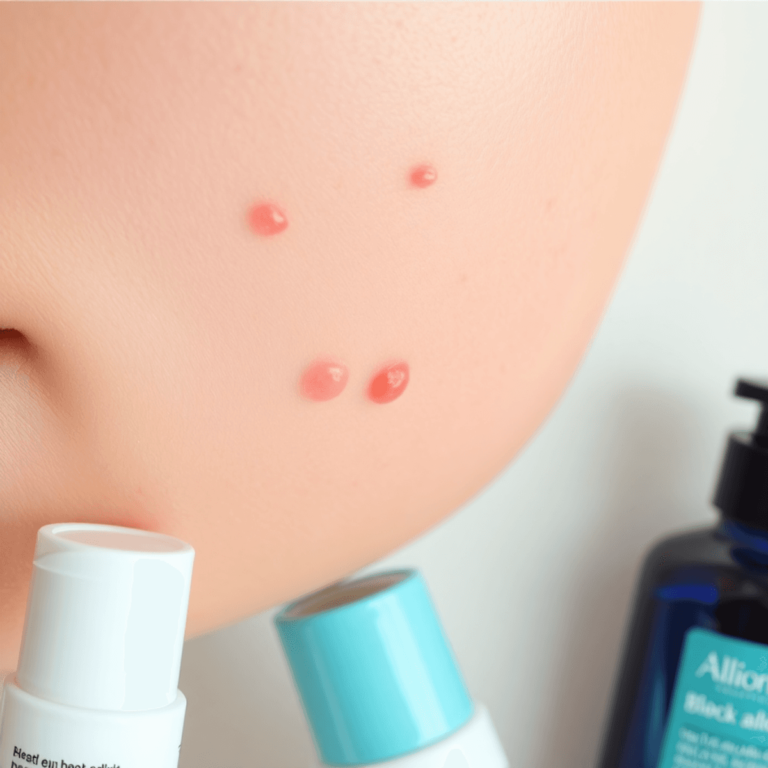How do you get clear skin

Introduction
The pursuit of clear skin shapes countless daily routines, self-care practices, and personal confidence levels. From persistent blackheads on your nose to stubborn forehead bumps, skin concerns can impact how you present yourself to the world and influence your self-esteem.
Your skin tells a unique story. It reflects your daily habits, stress levels, and overall health. Many people struggle with various skin issues:
- Stubborn whiteheads and blackheads
- Persistent forehead bumps
- Frustrating pimple scars
- Congested, textured skin
This comprehensive guide unlocks the secrets to achieving and maintaining clear, healthy skin. You’ll discover:
- Personalized skincare routines tailored to your specific skin type
- Effective techniques for addressing common skin concerns
- Professional insights on when to seek dermatological help
- Natural remedies you can try at home
- Lifestyle adjustments that promote skin health
Clear skin isn’t just about appearance – it’s about feeling confident and comfortable in your own skin. This guide equips you with practical, science-backed strategies to transform your skin health. Whether you’re dealing with occasional breakouts or persistent skin issues, you’ll find valuable solutions to achieve the clear, radiant complexion you desire.
Understanding Your Skin Type
Your skin type determines how your skin behaves, reacts to products, and requires care. Identifying your specific skin type helps create an effective skincare routine tailored to your needs.
The Main Skin Types:
1. Oily Skin
- Appears shiny, especially in the T-zone
- Prone to enlarged pores and blackheads
- Feels greasy by midday
- Makeup tends to slide off
2. Dry Skin
- Feels tight and rough
- Shows visible flaking
- Prone to redness and irritation
- May show premature signs of aging
3. Combination Skin
- Oily T-zone (forehead, nose, chin)
- Dry cheeks and jaw area
- Different areas require different care
- Seasonal changes affect skin behavior
4. Normal Skin
- Balanced oil production
- Few imperfections
- Not sensitive to products
- Small, barely visible pores
How to Identify Your Skin Type:
1. The Bare-Face Test
- Cleanse your face thoroughly
- Wait 30 minutes without applying products
- Check how your skin feels and looks
- Notice any shine, tightness, or both
2. The Blotting Paper Method
- Press blotting paper on different face areas
- Heavy oil on paper = oily skin
- No oil = dry skin
- Oil only in T-zone = combination skin
Your skin type can change with seasons, hormones, and age. Regular assessment helps adjust your skincare routine accordingly. Understanding your skin type prevents common issues like blackheads, chin pimples, and spots by allowing you to choose appropriate products and treatments.
1. Daily Skincare Routine
A consistent skincare routine is the foundation of clear, healthy skin. Your daily regimen creates a protective barrier against environmental damage while supporting your skin’s natural renewal process.
Morning Routine Steps:
- Cleanse with lukewarm water
- Apply toner (if needed)
- Add treatment products
- Moisturize
- Apply sunscreen
Evening Routine Steps:
- Double cleanse (makeup removal followed by regular cleanser)
- Apply toner (if needed)
- Add treatment products
- Apply night moisturizer
Effective Face Washing Technique:
- Use gentle, circular motions with your fingertips
- Spend 60 seconds cleansing
- Avoid hot water – it strips natural oils
- Pat dry with a clean towel – never rub
Choosing Your Cleanser:
- Oily skin: Gel or foam cleansers with salicylic acid
- Dry skin: Cream or milk cleansers with ceramides
- Sensitive skin: Fragrance-free, hypoallergenic formulas
- Combination skin: Balanced pH cleansers with mild ingredients
Moisturizer Selection Guide:
- Oily skin: Light, oil-free gel moisturizers
- Dry skin: Rich creams with hyaluronic acid
- Sensitive skin: Fragrance-free formulas with soothing ingredients
- Combination skin: Medium-weight lotions
Tips for Maximum Benefits:
- Apply products on slightly damp skin
- Wait 30 seconds between each product
- Use upward motions when applying
- Keep hands clean before touching your face
- Replace products every 6-12 months
Special Considerations:
- For eczema-prone skin: Use ceramide-rich products
- For bumpy skin: Include gentle chemical exfoliants
- For sensitive areas: Apply products gently around eyes
- For breakout zones: Focus on oil-free formulations
Your skincare products work together – each step prepares your skin for the next one and enhances the effectiveness of the products used.
2. Exfoliation Practices for Clear Skin
Regular exfoliation removes dead skin cells, unclogs pores, and promotes cellular turnover – essential steps for achieving clear, smooth skin. Your skin naturally sheds dead cells every 30 days, but this process can slow down, leading to dull complexion and clogged pores.
Types of Exfoliants:
- Physical Exfoliants: These products use abrasive ingredients or tools to manually scrub away dead skin cells. Examples include facial scrubs, cleansing brushes, washcloths, and facial sponges.
- Chemical Exfoliants: Unlike physical exfoliants, these products use acids or enzymes to dissolve dead skin cells without any scrubbing. Alpha-hydroxy acids (AHAs) are ideal for dry, sun-damaged skin; beta-hydroxy acids (BHAs) are perfect for oily, acne-prone skin; and enzymes are a gentle option for sensitive skin.
Recommended Exfoliating Schedule:
- Oily/Combination Skin: 2-3 times per week
- Normal Skin: 1-2 times per week
- Dry/Sensitive Skin: Once per week
Key Ingredients to Look For:
- Salicylic acid (2%) – penetrates pores deeply
- Glycolic acid (5-10%) – improves skin texture
- Lactic acid – gentle exfoliation for sensitive skin
- Fruit enzymes – natural exfoliation option
Signs of Over-Exfoliation:
Over-exfoliating can lead to redness, irritation, tightness in the skin, increased sensitivity, and even breakouts. If you notice any of these signs, reduce the frequency of your exfoliation.
Start with gentle exfoliation once per week. Listen to your skin’s response before increasing frequency. Apply exfoliants in gentle, circular motions – avoid harsh scrubbing. Always follow with moisturizer and sunscreen during daytime use.
Pro tip: Patch test new exfoliating products on a small area for 24 hours before full application. Stop use immediately if irritation occurs.
3. Makeup and Cosmetics Considerations
Your makeup choices play a crucial role in maintaining clear skin. Non-comedogenic products are specifically formulated to avoid clogging your pores, making them essential for anyone prone to breakouts or blackheads.
Choosing the Right Products
Look for these skin-friendly ingredients on your makeup labels:
- Hyaluronic acid
- Niacinamide
- Zinc oxide
- Titanium dioxide
- Silica
Avoid these pore-clogging ingredients:
- Mineral oil
- Lanolin
- Coconut oil
- Isopropyl myristate
- Sodium lauryl sulfate
Makeup Removal Best Practices
A proper makeup removal routine prevents breakouts and keeps your skin clear:
- Double cleansing methodStart with an oil-based cleanser to break down makeup
- Follow with a water-based cleanser to remove remaining residue
- Targeted removal techniquesUse gentle, circular motions
- Pay extra attention to eye makeup
- Never pull or tug at your skin
- Essential toolsClean, soft washcloths
- Reusable makeup removal pads
- Micellar water for sensitive areas
Maintaining Clean Tools
Your makeup tools can harbor bacteria that cause breakouts:
- Clean brushes weekly with gentle soap
- Replace makeup sponges monthly
- Never share makeup products
- Check expiration dates regularly
- Store tools in a clean, dry place
Application Tips for Clear Skin
- Apply products with clean hands
- Layer products from lightest to heaviest
- Allow each product to absorb before applying the next
- Use minimal products during breakouts
- Remove makeup immediately after exercise
Remember to patch test new products on a small area of skin before full application. This practice helps identify potential irritants before they cause widespread reactions.
4. Sun Protection Strategies for Healthy Skin
Sun protection plays a vital role in achieving and maintaining clear skin. UV rays can trigger inflammation, worsen acne scars, and cause hyperpigmentation – making your journey to clear skin more challenging.
The Impact of Sun Exposure on Skin Health:
- Darkens existing acne scars
- Increases skin inflammation
- Triggers excess oil production
- Breaks down collagen, leading to premature aging
- Creates uneven skin texture
Choosing the Right Sunscreen for Your Skin Type:
For Oily/Acne-Prone Skin:
- Select gel-based or lightweight liquid formulas
- Look for “oil-free” or “non-comedogenic” labels
- Choose SPF 30-50 with broad-spectrum protection
- Consider products with zinc oxide or titanium dioxide
For Dry/Sensitive Skin:
- Use cream-based or moisturizing sunscreens
- Pick formulas with added hydrating ingredients
- Avoid products containing alcohol
- Select physical sunscreens over chemical ones
Application Tips for Maximum Protection:
- Apply sunscreen 15-20 minutes before sun exposure
- Use a quarter-sized amount for your face
- Reapply every 2 hours when outdoors
- Don’t forget often-missed areas like ears and neck
- Wear sunscreen even on cloudy days or indoors
Additional Sun Protection Measures:
- Wear wide-brimmed hats when outdoors
- Seek shade during peak UV hours (10 am – 4 pm)
- Use UV-protective clothing when possible
- Consider using umbrellas for extended outdoor activities
Remember to patch test new sunscreens on a small area of your skin before applying them to your entire face. This practice helps prevent potential allergic reactions or breakouts that could compromise your clear skin goals.
5. Nutrition, Hydration, Sleep, and Stress Management: The Holistic Approach to Clear Skin
Your skin reflects your internal health. A holistic approach combining proper nutrition, hydration, quality sleep, and stress management creates the foundation for naturally clear skin.
Skin-Boosting Foods
Antioxidant-Rich Foods:
- Berries (blueberries, strawberries)
- Dark leafy greens
- Sweet potatoes
- Green tea
Omega-3 Rich Foods:
- Fatty fish (salmon, mackerel)
- Chia seeds
- Walnuts
- Flaxseeds
Foods to Limit:
- Dairy products
- High-glycemic foods
- Processed snacks
- Sugary beverages
Hydration for Skin Health
Your skin needs proper hydration to maintain its protective barrier. Aim for 8-10 glasses of water daily. Signs of dehydrated skin include:
- Tight feeling after washing
- Increased sensitivity
- Fine lines appearing more visible
- Dull complexion
Sleep’s Impact on Skin Health
Quality sleep allows your skin to repair and regenerate. During deep sleep phases:
- Collagen production increases
- Cell turnover accelerates
- Blood flow to skin improves
- Stress hormones decrease
Sleep Tips for Better Skin:
- Maintain a consistent sleep schedule
- Keep your bedroom cool (65-68°F)
- Use silk or satin pillowcases
- Aim for 7-9 hours nightly
Stress Management for Clear Skin
Stress triggers hormonal changes that can lead to breakouts. These practices help manage stress levels:
Quick Stress-Relief Techniques:
- Deep breathing exercises (5 minutes daily)
- Progressive muscle relaxation
- Regular physical activity
- Mindful meditation
Long-Term Stress Management:
- Regular yoga practice
- Nature walks
- Journaling
- Time management strategies
Tracking your skin‘s response to these lifestyle changes helps identify what works best for your unique needs. A skin journal can reveal patterns between your daily habits and skin condition.
6. Lifestyle Habits That Support Clear Skin
Your daily habits play a crucial role in maintaining clear, healthy skin. Small changes in your routine can create significant improvements in your skin’s appearance.
Pillowcase Hygiene
- Change your pillowcase every 2-3 days
- Use silk or satin pillowcases to reduce friction
- Wash pillowcases in hot water to kill bacteria
- Consider using antimicrobial pillowcases
Body Care Practices
- Pat your skin dry instead of rubbing
- Shower immediately after workouts
- Wear loose, breathable clothing
- Keep hair tied back during sleep
Environmental Factors
- Clean your phone screen daily
- Avoid touching your face throughout the day
- Keep your living space dust-free
- Use a humidifier in dry environments
Quick Fixes for Common Issues
- Use pore strips for stubborn blackheads
- Apply ice to reduce inflammation
- Spot treat bacne with benzoyl peroxide
- Use tea tree oil for body acne
Weekly Maintenance
- Deep clean makeup brushes
- Disinfect frequently touched items
- Replace loofah or body sponge
- Clean bed sheets and blankets
These lifestyle adjustments complement your skincare routine and create an environment where clear skin can thrive. Consistency with these practices helps prevent breakouts and maintains skin health.
7. Seeking Professional Help When Needed
Professional dermatological care becomes essential when your skin concerns persist despite consistent at-home care. Here’s when you should schedule a dermatologist consultation:
- Severe Acne: Deep, painful cysts or nodules that don’t respond to over-the-counter treatments
- Scarring: Persistent marks or indentations from previous breakouts
- Skin Discoloration: Stubborn dark spots, uneven tone, or hyperpigmentation
- Large Pores: Visible, enlarged pores that affect skin texture
- Aging Concerns: Age spots, fine lines, or premature aging signs
A dermatologist can provide:
- Prescription-strength topical treatments
- Oral medications for severe acne
- Professional treatments like chemical peels
- Laser therapy for scarring
- Personalized skincare routines
During your consultation, prepare to discuss:
- Your current skincare routine
- Products you’ve tried
- Medical history
- Diet and lifestyle factors
- Specific skin concerns
Many skin issues require professional intervention for optimal results. A dermatologist’s expertise can help identify underlying causes and create targeted treatment plans. Professional treatments often provide faster, more effective results than DIY solutions, particularly for stubborn skin concerns.
Remember to document your skin changes with photos before seeking professional help – this helps track progress and assists your dermatologist in developing an effective treatment strategy.
8. Natural Remedies You Can Try at Home (Optional)
Your kitchen likely contains powerful ingredients for natural skincare. These home remedies offer gentle alternatives to commercial products:
Honey Mask
- Raw honey contains natural antibacterial properties
- Apply a thin layer for 15-20 minutes
- Rinse with lukewarm water
Green Tea Ice Cubes
- Brew strong green tea and freeze in ice cube trays
- Gently rub the ice cube on your face
- Reduces inflammation and tightens pores
Oatmeal Scrub
- Mix ground oatmeal with water to form a paste
- Gently massage in circular motions
- Perfect for sensitive skin types
DIY Face Masks
- Mashed avocado + lemon juice for brightening
- Plain yogurt + turmeric for spot treatment
- Aloe vera gel + cucumber juice for soothing
Apple Cider Vinegar Toner
- Mix 1 part ACV with 4 parts water
- Apply with a cotton ball after cleansing
- Helps balance skin pH levels
Quick Tips
- Patch test new ingredients on your inner arm
- Use fresh ingredients for best results
- Store DIY mixtures in the refrigerator
- Apply these remedies on clean, dry skin
- Wait 24 hours between trying different remedies
These natural solutions work best when incorporated into your existing skincare routine. Remember that results vary based on skin type and consistency of application.
Conclusion: Your Journey Towards Clear Skin Starts Now!
Your path to clear, healthy skin is uniquely yours. The strategies shared in this guide serve as building blocks for creating your personalized skincare routine:
- Start with the basics: Cleansing, moisturizing, and sun protection form your foundation
- Listen to your skin: Adjust products and techniques based on how your skin responds
- Be consistent: Results come from daily dedication, not overnight miracles
- Stay patient: True skin transformation takes time – expect visible improvements within 4-6 weeks
Remember: clear skin isn’t about perfection. It’s about nurturing your skin’s health through mindful choices. Your skincare journey might include:
- Experimenting with different products
- Adjusting your diet and lifestyle habits
- Learning what triggers your breakouts
- Building sustainable daily routines
Don’t get discouraged by temporary setbacks. Each step you take – from changing pillowcases to drinking more water – brings you closer to your goal. When needed, seek professional guidance from dermatologists who can provide targeted solutions for stubborn skin concerns.
Start implementing these strategies today. Your future self will thank you for taking action now to achieve the clear, confident skin you deserve.
FAQs (Frequently Asked Questions)
What is the importance of having clear skin?
Clear skin is often associated with confidence and self-esteem. It can significantly impact how individuals perceive themselves and how they are perceived by others. Maintaining healthy skin is essential for overall well-being.
How can I identify my skin type?
To identify your skin type, observe how your skin behaves throughout the day. Oily skin typically appears shiny and may have enlarged pores, while dry skin feels tight and may flake. Combination skin displays characteristics of both oily and dry areas. Tailoring your skincare routine based on your specific type will yield better results.
What should my daily skincare routine include?
A daily skincare routine should include cleansing your face twice a day to remove impurities, moisturizing to keep the skin hydrated, and using products suited to your specific skin type to prevent breakouts and promote a clear complexion.
Why is exfoliation important for clear skin?
Regular exfoliation helps remove dead skin cells, preventing clogged pores and promoting cell turnover. This process can lead to smoother, clearer skin. It’s essential to choose appropriate exfoliating ingredients and not to overdo it, as excessive exfoliation can irritate the skin.
How does diet affect my skin health?
A healthy diet rich in fruits and vegetables promotes clear skin by providing essential nutrients that support cellular regeneration. Staying hydrated also plays a crucial role in maintaining moisture levels in the skin. Additionally, managing stress through techniques like yoga or meditation can help reduce acne flare-ups.
When should I consider seeking professional help for my skin issues?
If you experience persistent issues or severe acne that doesn’t improve with over-the-counter treatments, it may be time to consult a dermatologist. They can provide prescription treatments and tailored advice based on your unique situation.










